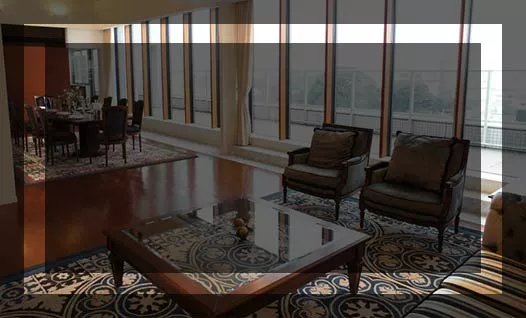History of Hiroo

The area around Hiroo Station on the Hibiya Line is a cosmopolitan area where many foreigners gather. The area is safe from a security point of view, as many embassies are located, and there are many English-speaking facilities, making it a comfortable place for foreigners to reside. While Hiroo is home to many luxury rental apartments and houses for foreigners. Hiroo's history has played a major role in making it the cosmopolitan city it is today. Here is an introduction to the history of Hiroo.
History of Hiroo: Edo era

江戸名所図会 7巻. 著者 松濤軒斎藤長秋[他]
In the early Edo period, the area of Hiroo, which was located in the south-west direction from Edo Castle, was known as the 'Uraokimon (unlucky quarter)' and was covered with fields. Many temples were built in the Uraokimon, but samurai, merchants and farmers began to join them, and thereafter, the houses of feudal lords and Hatamoto began to line the area. Even today, slopes named after daimyo residences can still be seen.
The ukiyoe below shows that Hiroo was a vast field. This is a view from Sagamidono Bridge (Shinohashi) to the area of present-day Shirokane 3-chome, with the famous eel kabayaki (eel) restaurant of the time on the left.
At the end of the Edo, Azabusan Zenpukuji became Japan's first American embassy.
When the Meiji Restoration began, the feudal lords returned to various parts of Japan, and the sites of former daimyo and samurai residences were confiscated by the government and given as rewards to the leading figures of the time. A number of relief organisations were also set up to help the various poor and Meiji Restoration rebels. The former samurai residences were also used as embassies, and the high ground of Hiroo became a popular place for them to avoid the harsh humidity. The location of several embassies in the same area also facilitated security.
Note that the gardens of some samurai and daimyo residences are still open to the public as parks. Arisugawa-no-miya Memorial Park was originally used as a suburban residence of the Morioka Nanbu clan.

History of Hiroo: Post-War

Although the samurai residences were used as embassies of various countries and for important government officials, the majority of people in Hiroo were still ordinary citizens. After the war, when large numbers of US troops were stationed in the area and began to seize Japanese military and other facilities, the area also began to host large numbers of Americans. Similarly, many American soldiers were stationed in the Roppongi, Akasaka and Shibuya areas, and this led to the appearance of many restaurant businesses catering to American soldiers. At the same time, food, drink and fashion popular in the West were naturally introduced.
As the area developed, those who owned land became wealthy, earning income by helping to build high-rise flats, while many others remained on the land and can still be seen in the traditional/authentic houses in the back streets.
Although Hiroo is located in the heart of the city, it is an area where one can enjoy a calm townscape and cosmopolitan climate, away from the hustle and bustle of the city.
A high class environment grew from within the Hiroo area. Its international atmosphere was historically established due the many foreign embassies located in this area. This has resulted in the mixed and unique climate that exists in present day Hiroo.

- Apartments and Houses for Sale in Hiroo
- Listings of apartments, condominiums, and houses near international schools and foreign embassies.












